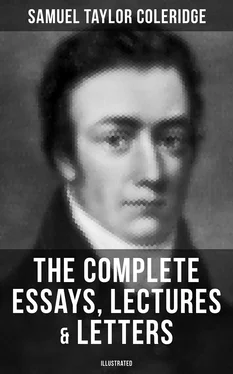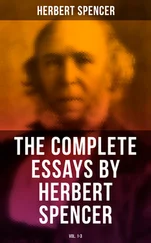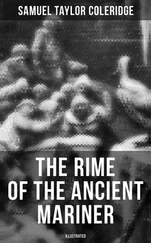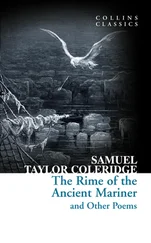Table of Contents
The system of Dualism introduced by Des Cartes — Refined first by Spinoza and afterwards by Leibnitz into the doctrine of Harmonia praestabilita — Hylozoism — Materialism — None of these systems, or any possible theory of association, supplies or supersedes a theory of perception, or explains the formation of the associable.
To the best of my knowledge Des Cartes was the first philosopher who introduced the absolute and essential heterogenity of the soul as intelligence, and the body as matter. The assumption, and the form of speaking have remained, though the denial of all other properties to matter but that of extension, on which denial the whole system of Dualism is grounded, has been long exploded. For since impenetrability is intelligible only as a mode of resistance; its admission places the essence of matter in an act or power, which it possesses in common with spirit; and body and spirit are therefore no longer absolutely heterogeneous, but may without any absurdity be supposed to be different modes, or degrees in perfection, of a common substratum. To this possibility, however, it was not the fashion to advert. The soul was a thinking substance, and body a space-filling substance. Yet the apparent action of each on the other pressed heavy on the philosopher on the one hand; and no less heavily on the other hand pressed the evident truth, that the law of causality holds only between homogeneous things, that is, things having some common property; and cannot extend from one world into another, its contrary. A close analysis evinced it to be no less absurd than the question whether a man’s affection for his wife lay North-east, or South-west of the love he bore towards his child. Leibnitz’s doctrine of a preestablished harmony; which he certainly borrowed from Spinoza, who had himself taken the hint from Des Cartes’s animal machines, was in its common interpretation too strange to survive the inventor — too repugnant to our common sense; which is not indeed entitled to a judicial voice in the courts of scientific philosophy; but whose whispers still exert a strong secret influence. Even Wolf, the admirer and illustrious systematizer of the Leibnitzian doctrine, contents himself with defending the possibility of the idea, but does not adopt it as a part of the edifice.
The hypothesis of Hylozoism, on the other side, is the death of all rational physiology, and indeed of all physical science; for that requires a limitation of terms, and cannot consist with the arbitrary power of multiplying attributes by occult qualities. Besides, it answers no purpose; unless, indeed, a difficulty can be solved by multiplying it, or we can acquire a clearer notion of our soul by being told that we have a million of souls, and that every atom of our bodies has a soul of its own. Far more prudent is it to admit the difficulty once for all, and then let it lie at rest. There is a sediment indeed at the bottom of the vessel, but all the water above it is clear and transparent. The Hylozoist only shakes it up, and renders the whole turbid.
But it is not either the nature of man, or the duty of the philosopher to despair concerning any important problem until, as in the squaring of the circle, the impossibility of a solution has been demonstrated. How the esse assumed as originally distinct from the scire, can ever unite itself with it; how being can transform itself into a knowing, becomes conceivable on one only condition; namely, if it can be shown that the vis representativa, or the Sentient, is itself a species of being; that is, either as a property or attribute, or as an hypostasis or self subsistence. The former — that thinking is a property of matter under particular conditions, — is, indeed, the assumption of materialism; a system which could not but be patronized by the philosopher, if only it actually performed what it promises. But how any affection from without can metamorphose itself into perception or will, the materialist has hitherto left, not only as incomprehensible as he found it, but has aggravated it into a comprehensible absurdity. For, grant that an object from without could act upon the conscious self, as on a consubstantial object; yet such an affection could only engender something homogeneous with itself. Motion could only propagate motion. Matter has no Inward. We remove one surface, but to meet with another. We can but divide a particle into particles; and each atom comprehends in itself the properties of the material universe. Let any reflecting mind make the experiment of explaining to itself the evidence of our sensuous intuitions, from the hypothesis that in any given perception there is a something which has been communicated to it by an impact, or an impression ab extra. In the first place, by the impact on the percipient, or ens representans, not the object itself, but only its action or effect, will pass into the same. Not the iron tongue, but its vibrations, pass into the metal of the bell. Now in our immediate perception, it is not the mere power or act of the object, but the object itself, which is immediately present. We might indeed attempt to explain this result by a chain of deductions and conclusions; but that, first, the very faculty of deducing and concluding would equally demand an explanation; and secondly, that there exists in fact no such intermediation by logical notions, such as those of cause and effect. It is the object itself, not the product of a syllogism, which is present to our consciousness. Or would we explain this supervention of the object to the sensation, by a productive faculty set in motion by an impulse; still the transition, into the percipient, of the object itself, from which the impulse proceeded, assumes a power that can permeate and wholly possess the soul,
And like a God by spiritual art,
Be all in all, and all in every part.
And how came the percipient here? And what is become of the wonder-promising Matter, that was to perform all these marvels by force of mere figure, weight and motion? The most consistent proceeding of the dogmatic materialist is to fall back into the common rank of soul-and- bodyists; to affect the mysterious, and declare the whole process a revelation given, and not to be understood, which it would be profane to examine too closely. Datur non intelligitur. But a revelation unconfirmed by miracles, and a faith not commanded by the conscience, a philosopher may venture to pass by, without suspecting himself of any irreligious tendency.
Thus, as materialism has been generally taught, it is utterly unintelligible, and owes all its proselytes to the propensity so common among men, to mistake distinct images for clear conceptions; and vice versa, to reject as inconceivable whatever from its own nature is unimaginable. But as soon as it becomes intelligible, it ceases to be materialism. In order to explain thinking, as a material phaenomenon, it is necessary to refine matter into a mere modification of intelligence, with the twofold function of appearing and perceiving. Even so did Priestley in his controversy with Price. He stripped matter of all its material properties; substituted spiritual powers; and when we expected to find a body, behold! we had nothing but its ghost — the apparition of a defunct substance!
I shall not dilate further on this subject; because it will, (if God grant health and permission), be treated of at large and systematically in a work, which I have many years been preparing, on the Productive Logos human and divine; with, and as the introduction to, a full commentary on the Gospel of St. John. To make myself intelligible as far as my present subject requires, it will be sufficient briefly to observe. — 1. That all association demands and presupposes the existence of the thoughts and images to be associated. — 2. That the hypothesis of an external world exactly correspondent to those images or modifications of our own being, which alone, according to this system, we actually behold, is as thorough idealism as Berkeley’s, inasmuch as it equally, perhaps in a more perfect degree, removes all reality and immediateness of perception, and places us in a dream-world of phantoms and spectres, the inexplicable swarm and equivocal generation of motions in our own brains. — 3. That this hypothesis neither involves the explanation, nor precludes the necessity, of a mechanism and co-adequate forces in the percipient, which at the more than magic touch of the impulse from without is to create anew for itself the correspondent object. The formation of a copy is not solved by the mere pre-existence of an original; the copyist of Raffael’s Transfiguration must repeat more or less perfectly the process of Raffael. It would be easy to explain a thought from the image on the retina, and that from the geometry of light, if this very light did not present the very same difficulty. We might as rationally chant the Brahim creed of the tortoise that supported the bear, that supported the elephant, that supported the world, to the tune of “This is the house that Jack built.” The sic Deo placitum est we all admit as the sufficient cause, and the divine goodness as the sufficient reason; but an answer to the Whence and Why is no answer to the How, which alone is the physiologist’s concern. It is a sophisma pigrum, and (as Bacon hath said) the arrogance of pusillanimity, which lifts up the idol of a mortal’s fancy and commands us to fall down and worship it, as a work of divine wisdom, an ancile or palladium fallen from heaven. By the very same argument the supporters of the Ptolemaic system might have rebuffed the Newtonian, and pointing to the sky with self-complacent grin have appealed to common sense, whether the sun did not move and the earth stand still.
Читать дальше












